The ultimate guide to designing your custom rug: crafting the perfect size, colour, and material blend
Written by
13 April 2024
•
6 min read

A good rug is like icing on a cake. It’s the finishing touch, the piece that pulls all the other pieces — sofas, occasional chairs, coffee tables, floor lamps — together. Perhaps the only thing that can make a good rug better is when it has been custom-made for your space.
Defining itself as a design company that makes rugs, Designer Rugs has been hand-making gorgeous rugs, in collaboration with leading Australian artists and designers, for four decades. While their in-house collections span the full spectrum of residential and commercial rug needs, the crown jewel of Designer Rugs’ offering is their custom rug service.
Handwoven by highly-skilled craftspeople, and made to your exact colour, shape, size, and material specifications, a bespoke Designer Rug is exactly what your space needs.

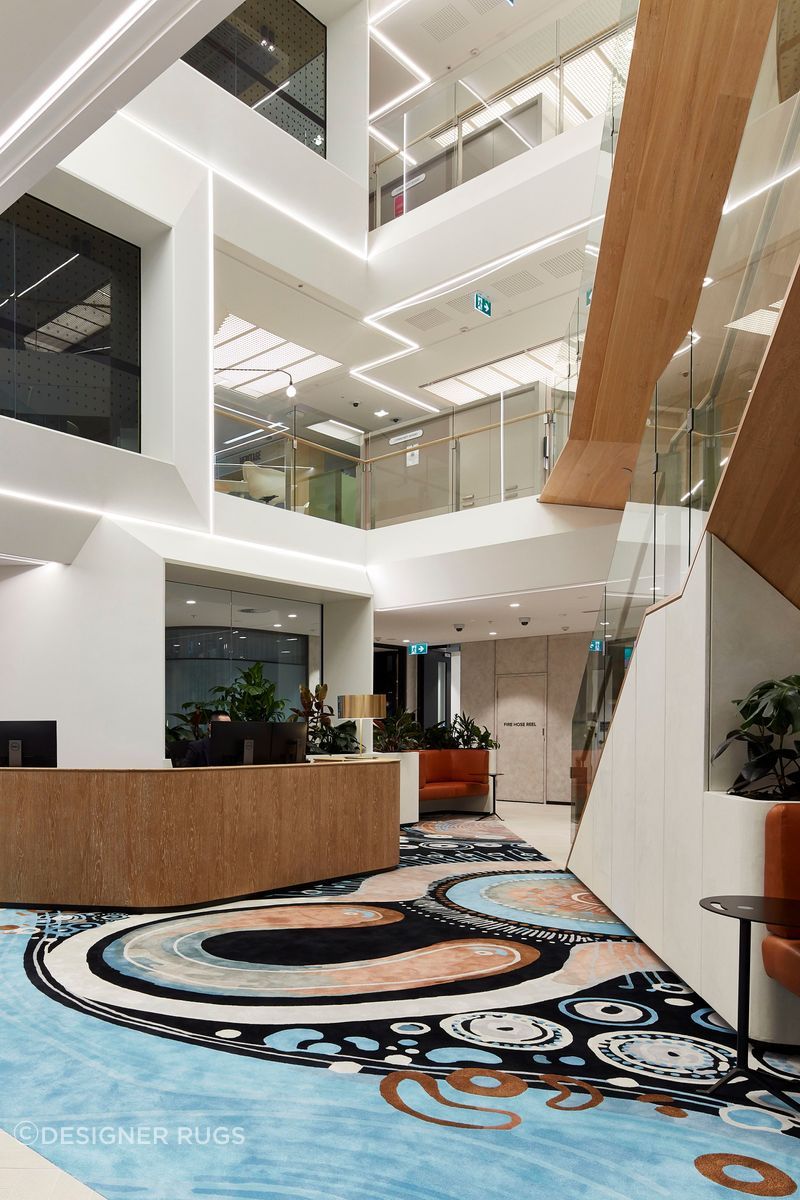
The custom rug design journey
“The first step of the process is perhaps the most exciting,” says Lia Pielli, Senior Designer at Designer Rugs. “Using your chosen inspiration — paint chips, fabric swatches, artwork, images of your room, floor plans, or your imagination — our team will help you translate your vision into a bespoke rug.”
Once the design, colours, and materials have been selected, the team presents you with to-scale artwork for approval. From there, the approved design is translated by craftspeople to be hand made — a process that can take from six weeks to six months depending on the size and complexity of your rug.
A major part of Designer Rugs’ custom rug operation is commercial projects, with many clients requesting bespoke rugs for different areas in their buildings.
“When designing a custom rug for any space, we must consider everything from interiors, atmosphere, furnishings, and colours, to lighting and the use of zones and rooms. Large commercial projects, such as hotels, shopping centres, and offices, call for custom-made rugs that can satisfy specific design aesthetics and respond to the high demands of the end users. Finding solutions that meet the client’s durability and design needs, within the budgets and timelines of these large commercial projects, is where the Designer Rugs team really comes into their own, flexing their design and custom expertise.”
A recent project, commissioned by Sydney’s The W Hotel, requested several luxurious, yet practical custom-made rugs designed to meet the demands of the hotel’s public areas.
“Our expert designers worked with the team to create custom-made rugs for the foyer, restaurant, and spa. The rugs encapsulated a rich colour palette and luxurious aesthetic, balanced with practicality suitable for public areas within a hotel. Of particular note was the spa, as the design necessitated a tailored approach to accommodate specialised 'pods' for manicures and pedicures that were deemed ‘wet areas'. This solution had to maintain the visual appeal of the design while ensuring the functionality of the rugs remained uncompromised.”
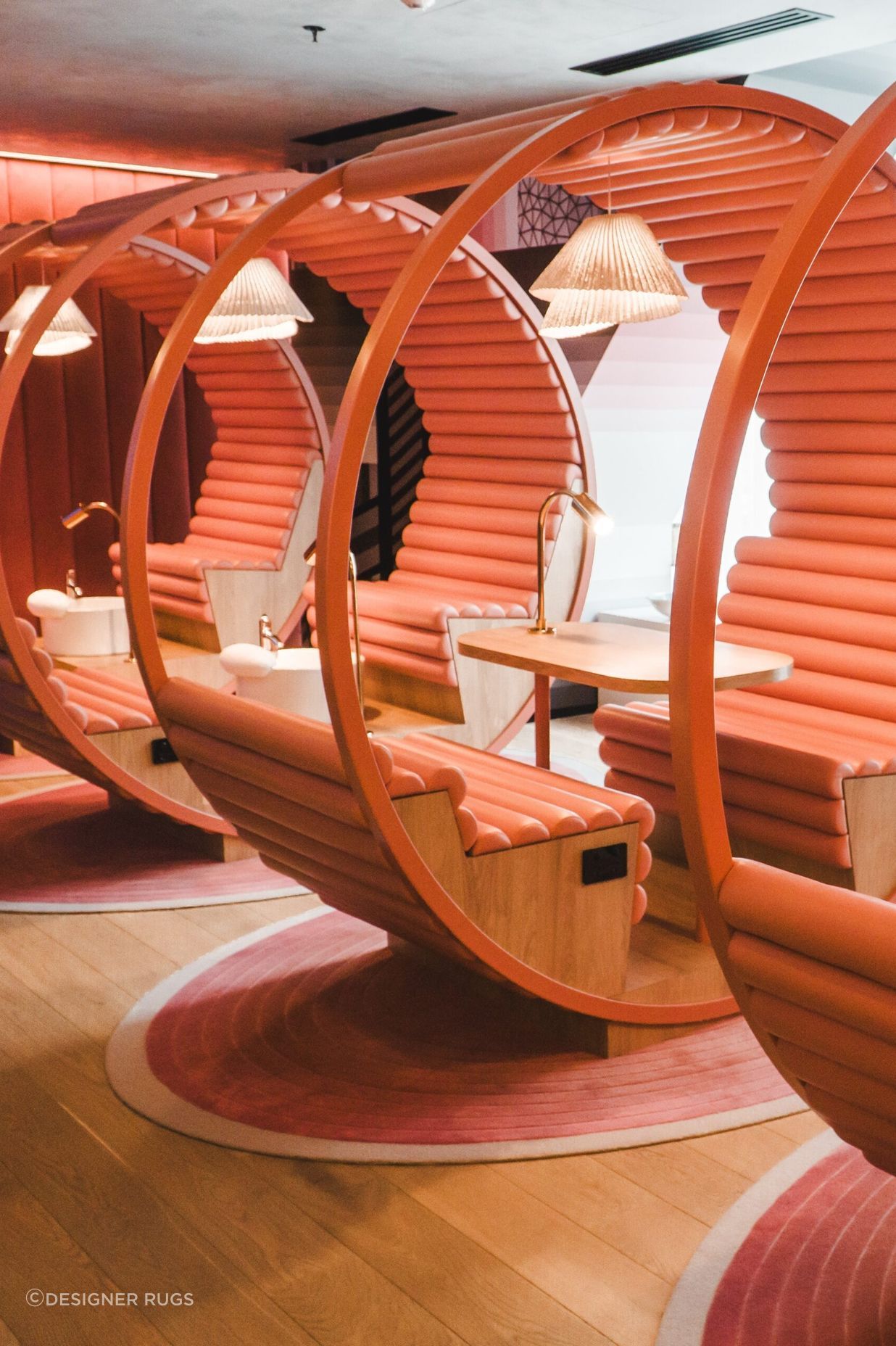

Rug construction
There are three key construction techniques used by the Designer Rugs team: hand-tufted, hand-knotted, and Axminster carpet.
“Hand-tufted rugs are produced by shooting yarn through a tufting gun into a stretched fabric frame, much like a stretched canvas,” Pielli explains.
Each shape and colour is tufted separately — think paint-by-numbers — making this method ideal for geometric designs.
“Hand-tufted is a more affordable option compared to hand-knotted,” Pielli says. “These rugs are also highly durable, making them suitable for both residential and commercial applications.”
To make a hand knot rug, a weaver creates thousands of individual knots, tightly knotting the yarn around the warp of the rug.
“Our hand knot rugs start with luxurious raw materials such as wool, silk, hemp, bamboo, or linen. A skilled dyemaster carefully mixes and tests colours to create the perfect hues for your rug. These colours can be customised to suit your home and can range from earthy to vibrant. Once dyed, the materials for your rug are laid out to dry in the sun, then hand spun into balls ready to be woven,” Pielli explains.
With the dyed materials ready, the weaver draws the design onto a guide that is then hung on a loom. Each knot is colour-coded, providing a complex template for the weaver to follow. Once a row of knots has been completed, it is hammered down to form a dense, durable weave and then cut to create a soft pile.
“This ancient technique produces rugs with a beautiful, handmade quality, and is perfect for showcasing fine detail and organic designs.”
Designer Rugs’ third construction approach, Axminster carpet, is a style named after a type of hand-weaving that originated in the old English town of Axminster during the late 18th century. Made from 80% wool and 20% nylon, this luxurious carpet is extremely soft and durable, with a lot of flexibility in colour and design.
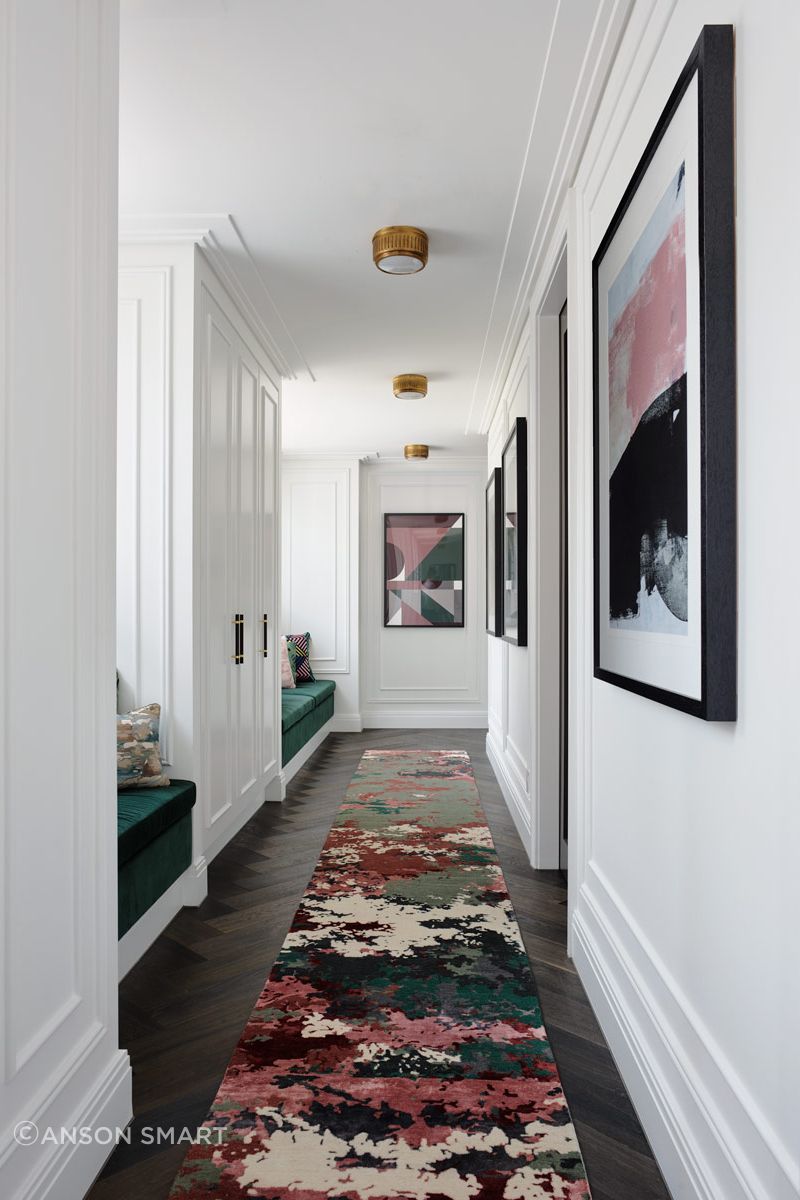
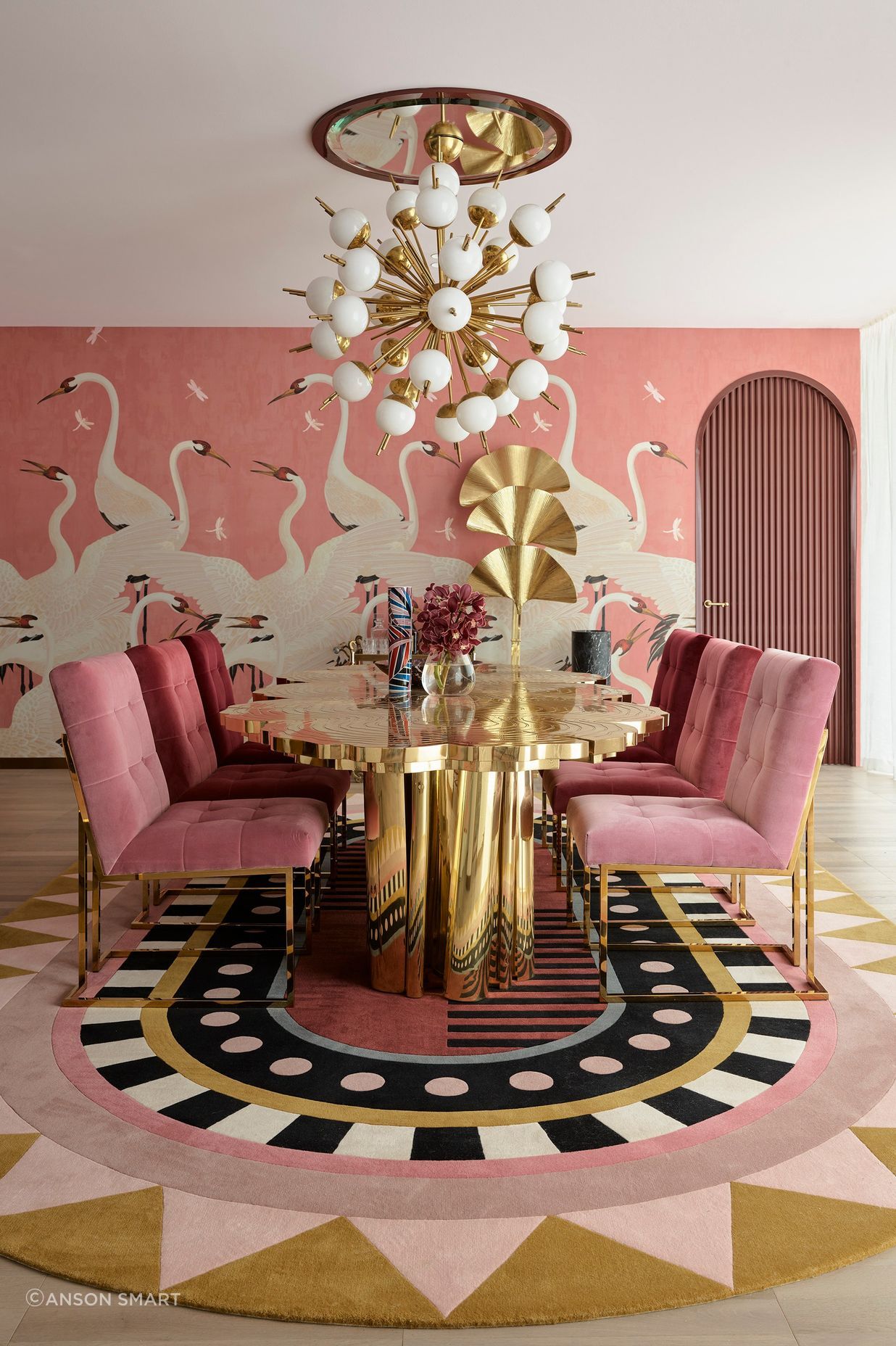
High-quality materials
Designer Rugs’ selection of beautiful materials includes wool, semi-worsted wool, bamboo, viscose, silk, and hemp.
“Sheep’s wool has been a staple of rug making for millennia. Its distinctive structure and lanolin content offers several benefits, namely, it is flame retardant, stain repellent, extremely durable, and even considered a natural dehumidifier. We primarily use New Zealand wool in our hand-tufted rugs, and Tibetan wool in our hand-knotted rugs,” Pielli explains.
“Semi-worsted wool is a particular solid high-grade quality of wool created by a combing process. Because of its dense pile, it is ideal for use in particularly detailed hand-tufted rugs. Very intricate designs can be carved into semi-worsted wool with a crisp finish.”
To add dimension and shine to your rug, bamboo, viscose, and silk are great material choices. For more earthy, natural designs, hemp — one of the strongest plant fibres — is ideal.
By playing with combinations of these materials, Designer Rugs’ expert team is able to turn a flat rug into a dimensional masterpiece. In the case of the ANZ Sydney project, Pielli describes a 50sqm hand-tufted rug made in collaboration with local aboriginal artist Lakkari Pitt
“Drawing inspiration from ideas around gathering and community, the rug was inlayed into the floor, creating a safe, flush surface and helping to minimise wear. To add a shimmer reminiscent of sunlight on water, while maintaining durability, bamboo silk was stippled with New Zealand wool in sections.”
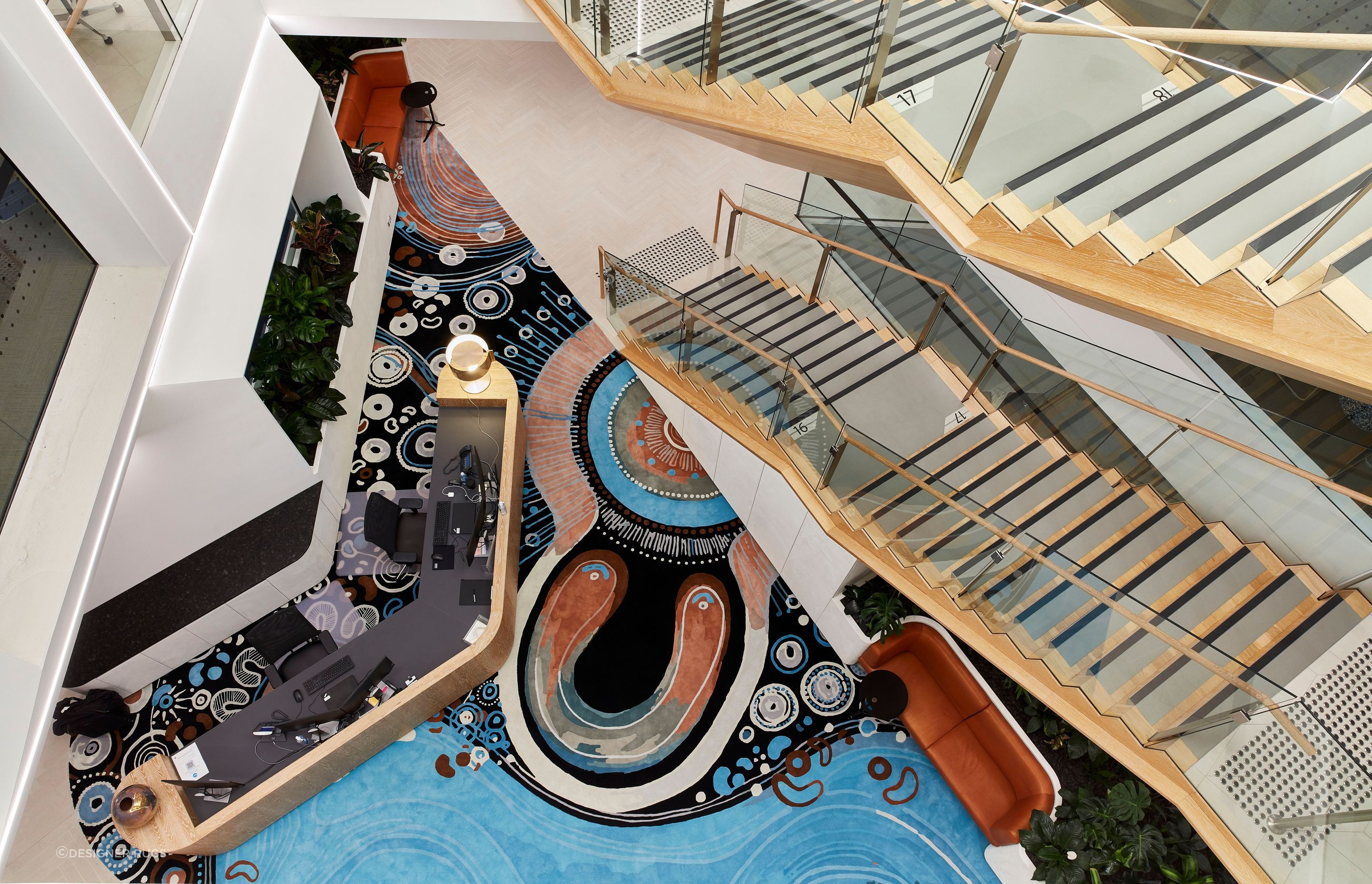
Styling your rug
Whether you’re designing your rug for a commercial or residential space, size is critical. Too small, and the rug will look out of place. Too large, and the rug will overpower the room.
“Determining size is one of the first steps in our rug design process. If you’re placing your rug in a lounge area, for example, we want the rug underneath the front feet of the sofa and any occasional chairs — but of course, it depends on the space. There are no rules for rug size, it’s completely case by case,” Danielle James, Sydney Showroom Manager, explains.
If you’re unsure how to style your finished rug, the team at Designer Rugs are happy to share their advice.
Learn more about Designer Rugs.